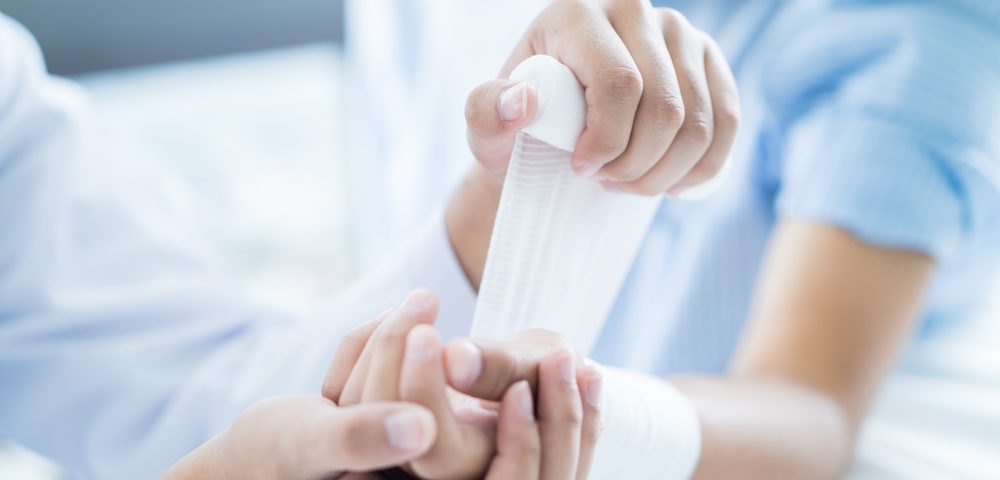I never think much about my scars. I wear them like badges of honor earned through the rites of passage of my health journey. But the Mercedes incision across my midsection from my liver transplant has been bothering me.
Over the past few weeks, I’ve found myself both consciously scratching and absentmindedly rubbing my fingers along the slightly raised scar to relieve the itchiness. I’ve also been feeling a slight tugging sensation along the right side of the scar when I exercise my abdominal muscles.
I wouldn’t say I’m experiencing pain. The itchiness is more of an annoyance and the pulling sensation causes some mild discomfort when doing pushups. I chalk this up to regaining the feeling in my abdomen as the nerves continue to regenerate from my surgery two years ago. But I wonder if I could have taken better care of my incision and other wounds to lessen the physical effects and aesthetic of my scars.
Most inflammatory bowel disease (IBD) patients won’t have the same type of scar that I have. However, the probability of caring for a surgical wound is high. The Crohn’s & Colitis Foundation of America estimates that 23 percent to 45 percent of ulcerative colitis patients and up to 75 percent of Crohn’s patients will eventually require surgery.
Scarring also may occur because of skin disorders associated with IBD. In a past column, I shared how I suffered from pyoderma gangrenosum and included a picture of what the scar looks like. With the complications associated with IBD treatments and symptoms, scarring is an inevitable result of living with the disease.
Scars are a natural part of the healing process. Scars form when the skin is damaged. The injury triggers the body to produce collagen, a fibrous protein. Collagen mixes with blood platelets to form a clot and close the wound. As the collagen builds, the wound fills from the bottom up with new tissue growth. As the top of the wound closes, the new tissue forms a scar.
Although scars aren’t preventable, proper wound care can minimize their appearance and the subsequent pain. The depth and severity of the wound, as well as the location of the injury, also influence the way a scar forms. The American Academy of Dermatology recommends keeping the wound clean, moisturized, and bandaged to diminish scars.
Gently washing the injured area daily with mild soap and cool water keeps the wound clean and prevents infection. Contrary to belief, alcohol and hydrogen peroxide should be avoided. Although both can be used as disinfectants, they damage and dry out the skin. This can cause inflammation and itching.
The next step in proper wound care is moisturizing. If the wound is cleaned properly, antibacterial or other medicinal ointments are unnecessary. Instead, petroleum jelly or aloe vera can be used as a moisturizer.
Keeping the area moist accelerates the healing process and prevents a scab from forming. Scabs hinder the healing process. If a scab does form, it should be left alone until it falls off by itself. Scratching it off before new tissue has developed underneath could cause more damage to the wound, lead to infection, and create a bigger scar.
Letting a wound “breathe” is another myth that inhibits healing. Not bandaging the wound defeats the purpose of keeping the area clean and moist. A fresh bandage should be applied daily after cleaning and moisturizing the area.
Surgical wounds or incisions require different care immediately following an operation. A new incision should be kept dry to prevent the wound from reopening. Patients usually cannot shower or bathe for the first 24 to 48 hours after surgery. Once new tissue growth has sufficiently closed the incision, normal wound care can commence as directed by the patient’s healthcare provider.
Over the years, I’ve cleaned my wounds with alcohol and allowed them to scab over. I’m also guilty of picking at and scratching scabs, which only made my scars worse. The good news is that even after a scar has formed, the healing process continues. Scar tissue matures, or remodels, as the new collagen realigns to conform to the surrounding skin. This process can take months or years until the scar begins to fade and become less visible.
As my scars continue to heal, I’ll take the itchiness and even the pain. The scars serve as a reminder that I’ve survived a battle and have lived another day to continue fighting the war.
***
Note: IBD News Today is strictly a news and information website about the disease. It does not provide medical advice, diagnosis, or treatment. This content is not intended to be a substitute for professional medical advice, diagnosis, or treatment. Always seek the advice of your physician or other qualified health providers with any questions you may have regarding a medical condition. Never disregard professional medical advice or delay in seeking it because of something you have read on this website. The opinions expressed in this column are not those of IBD News Today, or its parent company, BioNews Services, and are intended to spark discussion about issues pertaining to IBD.

